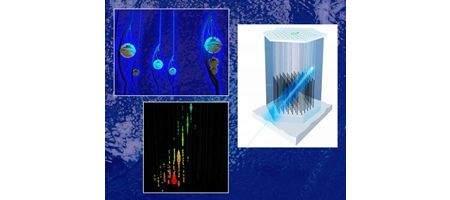Gamma ray bursts turn out not to be the cause of the strongest cosmic rays, leaving scientists scratching their heads.

Cosmic rays are energetic particles from deep in outer space – predominantly protons, plus some heavier atomic nuclei. They can achieve energies greater than those of the Large Hadron Collider, and have generally been believed to be caused by either active galacti nuclei or gamma-ray bursts.
For gamma-ray bursts to be the cause, though, should produce ultra-high-energy neutrinos – and scientists searching for these with IceCube, the giant neutrino telescope at the South Pole, say they’ve found exactly zero.
IceCube researchers sifted through data on 307 GRBs from two periods in 2008 and 2009 when IceCube was still under construction, looking for records of muon trails coincident in time and space with GRBs.
“According to a leading model, we would have expected to see 8.4 events corresponding to [gamma ray butst] GRB production of neutrinos in the IceCube data used for this search,” says Spencer Klein of Berkeley Lab.
“We didn’t see any, which indicates that GRBs are not the source of ultra-high-energy cosmic rays.”
The results support the theory that cosmic rays are caused by active galactic nuclei (AGNs) – although there’s no evidence as yet. IceCube has looked for neutrinos from AGNs, but as yet the data sets aren’t sensitive enough to set significant limits.
“While not finding a neutrino signal originating from GRBs was disappointing, this is the first neutrino astronomy result that is able to strongly constrain extra-galactic astrophysics models, and therefore marks the beginning of an exciting new era of neutrino astronomy,” says Peter Redl of the University of Maryland.






